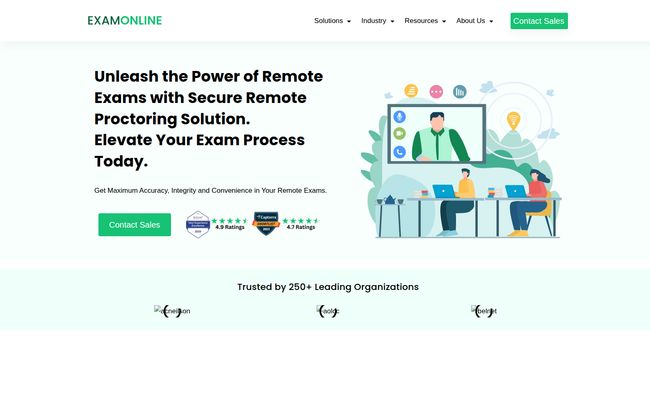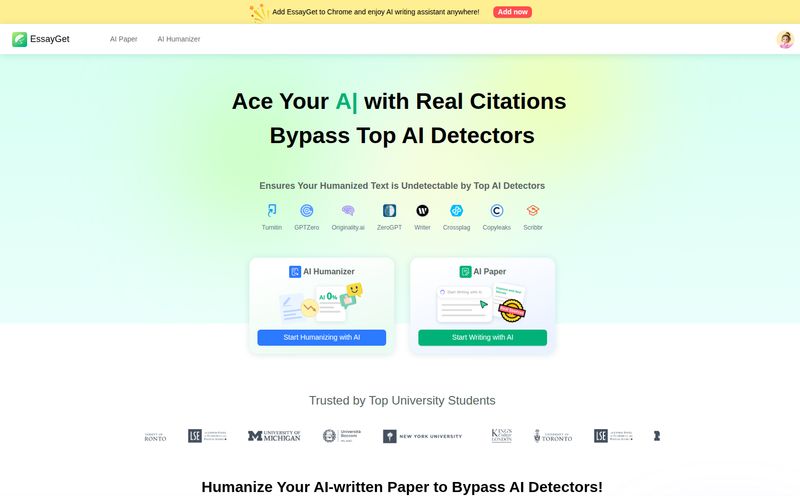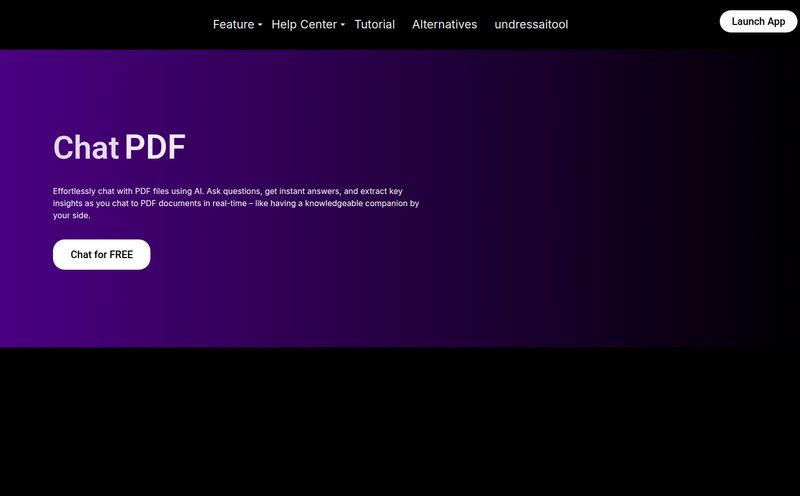Remember the feeling? Walking into a giant, echoey exam hall, the air thick with tension and the smell of cheap paper. Finding your assigned seat among hundreds, the scraping of chairs, the nervous coughs. For decades, this was the universal experience of any high-stakes test. It was standardized, it was controlled, and it was, let's be honest, a bit of a logistical nightmare.
Then, the world tilted on its axis. Suddenly, our offices, classrooms, and yes, even our exam halls, were beamed directly into our homes. And a huge, glaring question mark appeared: How in the world do you ensure academic or professional integrity when the testing center is a spare bedroom with a Wi-Fi connection?
I’ve been in the digital marketing and tech space for years, and I’ve watched the ed-tech and HR-tech worlds scramble to answer this. We’ve seen some clunky solutions, some half-baked webcam apps, and a whole lot of frustration. But every so often, a platform emerges that feels like it’s actually built for this new reality. That brings me to ExamOnline, a tool that's been making some noise. I decided to take a good, long look under the hood to see if it lives up to the hype.
What Exactly is ExamOnline? (More Than Just a Webcam Watcher)
At first glance, you might think ExamOnline is just another remote proctoring service. But that’s like saying a smartphone is just a device for making calls. It’s a lot more than that. This platform is a comprehensive solution designed to manage and secure the entire online examination process from start to finish. Think of it as a digital invigilator, a high-tech hall monitor, and a security guard all rolled into one powerful package.
It’s designed for sectors where the stakes are high—we’re talking higher education, corporate hiring and recruitment, professional certifications, and even competitive exams like olympiads. They're not just trying to stop you from peeking at your notes during a pop quiz; they're building a fortress around final exams and critical skills assessments.
The Core Features That Actually Matter
A feature list is just a list. What I care about is how those features solve real-world problems. And ExamOnline has a few that really stand out to me.
The AI-Powered Proctoring: Friend or Foe?
Let's address the elephant in the room: the AI. Yes, an artificial intelligence watches the test-taker. It flags suspicious behavior like looking away from the screen too often, someone else entering the room, or the sound of a phone notification. Some people find this a bit... 1984. And I get it. But from an institutional perspective, it's a game-changer. A single human proctor can't effectively monitor 30+ students on a screen. The AI can. It flags potential issues in real-time, allowing a human reviewer to check the recording later. It’s not about being creepy, it's about leveling the playing field and ensuring the person who earned the grade is the person who took the test.
The "Secure Browser" Lockdown
This is probably my favorite feature because it's so elegantly simple. The moment the exam begins, ExamOnline’s secure browser essentially puts the test-taker’s computer on lockdown. No opening new tabs to Google an answer, no copy-pasting from a hidden document, no screen-sharing. It’s the digital equivalent of the invigilator saying, "Okay, books away, clear your desks." It removes the most common and easiest methods of digital cheating, and for that, it's brilliant.

Visit ExamOnline
Playing Nice with Others: LMS Integration
Anyone who's ever worked in education or corporate training knows the pain of fragmented systems. Another login, another platform, another dashboard to learn. It’s a headache. ExamOnline seems to understand this, offering seamless integration with existing Learning Management Systems (LMS). This is a huge deal. It means administrators can manage exams from the environment they already use, and the user experience for both students and faculty is much smoother. It's a small detail on a feature list that translates to a massive quality-of-life improvement for the people actually using it.
The Real-World Impact: Who is This For?
So, where does a tool like this actually fit? Based on their case studies and my own industry knowledge, it’s a problem-solver for a few key groups.
For Universities and Higher Education
Imagine being able to offer final exams to students studying abroad, or those with accessibility issues, without compromising security. That’s the promise here. The testimonial from Al-Ahli Medical University in Saudi Arabia on their site speaks volumes. They talk about how it “transformed” their exam administration. For large institutions, the reduction in costs from not having to book massive physical venues and hire dozens of proctors is a massive financial incentive. This is about making education more flexible and accessible without watering down its credibility.
For Corporate Hiring and L&D
The war for talent is fierce. When you're hiring for a technical role, you need to know if the candidate actually knows how to code, not just how to find answers on Stack Overflow. Remote proctoring allows companies to administer credible, standardized skills tests to candidates anywhere in the world. This widens the talent pool immensely. It’s also huge for internal Learning & Development (L&D) departments that need to run certification programs. You can ensure that when an employee passes a safety or compliance course, they really know the material.
Let's Get Real: The Good, The Bad, and The Connected
No tool is perfect. In my experience, it's all about trade-offs. The upsides with ExamOnline are pretty clear: you get a massive boost in exam security and integrity, which in turn protects the value of your degrees and certifications. The flexibility to test candidates remotely opens up a world of possibilities for global recruitment and education. And the cost savings from ditching physical exam centers are nothing to sneeze at; we're talking serious budget relief for big organizations.
However, there are some potential hiccups to keep in mind. The biggest one is the reliance on a stable internet connection. If a student's Wi-Fi drops mid-exam, it can cause major stress and procedural headaches. This raises valid concerns about digital equity—not everyone has access to reliable, high-speed internet. Then there’s the privacy debate. While necessary for security, the idea of remote monitoring is a point of contention and requires clear communication and policy-making from the institution using the tool. And finally, there's the simple dependence on technology. If the platform has an outage (and all tech does, eventually), it could disrupt hundreds or thousands of exams at once. It's a risk that needs a solid contingency plan.
What's the Damage? A Look at ExamOnline Pricing
Here’s the part where I'd usually break down the pricing tiers for you. But, like a lot of enterprise-level B2B software, ExamOnline doesn't list its prices publicly. And honestly, that makes sense. The cost is likely going to depend heavily on your specific needs: the number of students or candidates, the specific features you need enabled, the level of support, etc. A university administering 10,000 exams a semester has very different needs than a company hiring 50 developers a year. Your best bet is to use the “Book a Demo” or “Contact Sales” options on their website. This way, you get a quote that's actually tailored to you, rather than a one-size-fits-none price tag.
My Final Verdict: Is ExamOnline the Real Deal?
After digging in, I’ve got to say, I'm pretty impressed. ExamOnline isn't just a band-aid for the problem of remote cheating. It’s a well-thought-out, comprehensive platform that addresses the entire lifecycle of an online assessment. It successfully balances robust security features with a user-friendly interface for administrators.
Is it the right tool for everyone? No. If you're just running informal quizzes, it’s probably overkill. But for any organization where the integrity of an exam is non-negotiable—universities, certification bodies, and serious hiring managers—this is a top-tier contender. It's the kind of heavy-duty tool you bring in when you absolutely need to know the results are legit. The shift to remote isn’t going away, and platforms like ExamOnline are what make that shift sustainable and credible.
Frequently Asked Questions
How does AI remote proctoring actually work?
The AI uses your webcam and microphone to monitor for behaviors that could indicate cheating. This includes things like another person entering the camera's view, you looking away from the screen consistently, using a mobile phone, or having other browser tabs open. It automatically flags these events for a human reviewer to check, ensuring both efficiency and accuracy.
Can I take an ExamOnline test on any device?
The platform is designed to be flexible, but specific device requirements (like needing a laptop or desktop with a webcam) are usually set by the institution administering the exam. It's always best to check the specific instructions provided for your test.
Is my data secure with ExamOnline?
Security is a major focus for them. The platform uses data encryption for information both in transit and at rest, along with strict user authentication and access controls. This is pretty standard for any reputable enterprise software that handles sensitive data.
Is ExamOnline only for universities?
Not at all. While higher education is a huge market for them, they also cater to corporate hiring and recruitment, Learning & Development (L&D) departments, medical and nursing assessments, and competitive exams like olympiads. Any scenario requiring secure, high-stakes testing is a good fit.
How much does ExamOnline cost?
Pricing is not publicly available because it's customized based on the organization's size and needs. To get an accurate price, you'll need to contact their sales team directly for a quote.
The world of assessment has changed for good. The days of the cavernous exam hall might be numbered, replaced by the quiet hum of a laptop. It's a big change, but with thoughtful technology steering the ship, it's one that can lead to more flexible, accessible, and secure evaluations for everyone involved.



